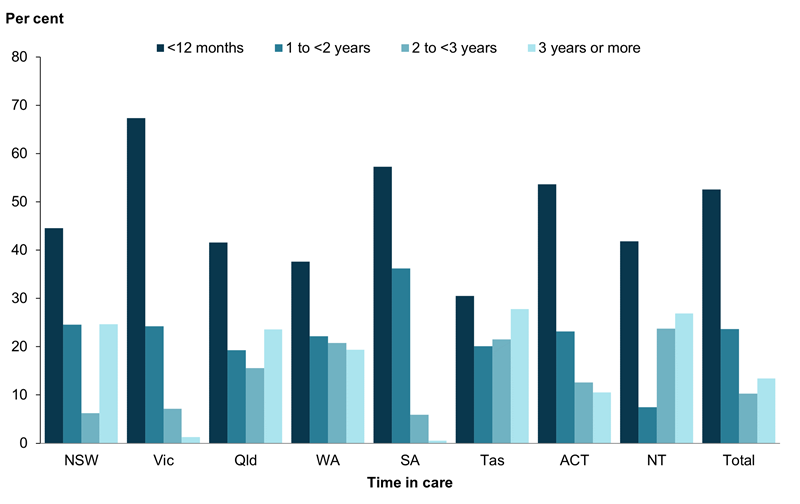Time taken to achieve a permanency outcome
Permanency planning should commence from the time children are admitted to out-of-home care. During the time a child is in out-of-home care, a child may be on interim/temporary orders and/or other arrangements before a legal permanency outcome is identified as a possibility and a decision about permanency is made.
Permanency outcomes in this context include reunifications, long-term third-party parental responsibility orders, adoptions and long-term guardianship/custody orders. The latter recognises that for some children, especially those with complex needs or requiring ongoing case management, the best permanency outcome is a long-term placement in out-of-home care.
In 2020–21, 9,900 children in out-of-home care achieved a permanency outcome. Of these children, 76% achieved a permanency outcome within 2 years of being admitted to out-of-home care and 87% within 3 years (Supplementary table S6.3 and Figure 6.4).
Time from admission to achieving a permanency outcome for children varies considerably across jurisdictions and likely reflects different policies and practices.
Figure 6.4: Proportion of children achieving a permanency outcome, by time from admission to out-of-home care and state or territory, 2020–21 (per cent)

Note: Permanency outcomes include reunifications, long-term third-party parental responsibility orders, long-term guardianship orders, and adoptions.
Chart: AIHW.
Source: Supplementary data table S6.3, AIHW Child Protection Collection 2020–21.
References
For a full list of references, go to References.


